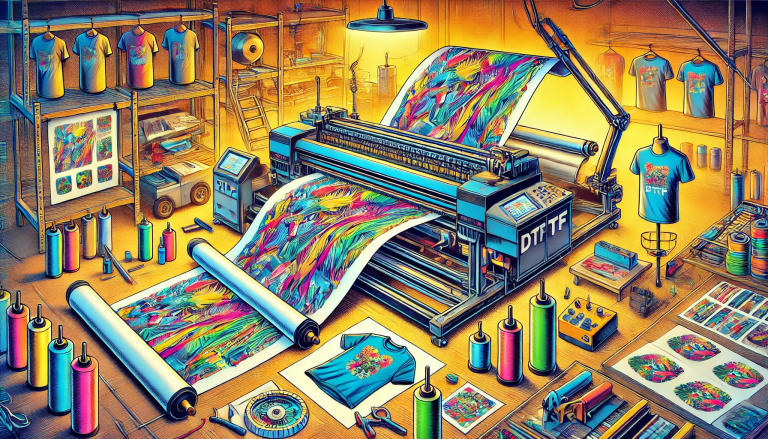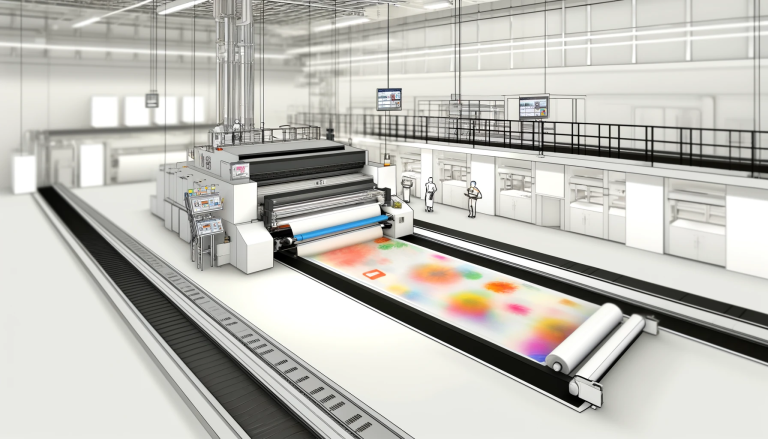“Experience the Difference of Is Film DTF A4 Screen Printing!” -MAXDTF- PET DTF Film Factory, DTF Film Transfer Factory, Made in china
Introduction
Is Film DTF A4 the same as screen printing? This is a question that many people have when it comes to printing. Film DTF A4 is a digital printing process that uses a special film to transfer an image onto a substrate. Screen printing is a traditional printing process that uses a mesh screen to transfer an image onto a substrate. While both processes are used to create printed images, they are not the same. In this article, we will discuss the differences between Film DTF A4 and screen printing, as well as the advantages and disadvantages of each.
The Pros and Cons of Film DTF and Screen Printing: Which is Best for Your Needs?
Film DTF (Direct to Film) and Screen Printing are two popular methods of printing graphics onto a variety of materials. Both have their advantages and disadvantages, so it is important to consider which method is best for your needs.
Pros of Film DTF
Film DTF is a great choice for those who need to print large quantities of graphics quickly and cost-effectively. It is a digital printing process that uses a computer-controlled printer to transfer an image directly onto a film substrate. This method is ideal for printing large-format graphics, such as banners, signs, and vehicle wraps. It is also a great choice for printing on a variety of materials, including vinyl, canvas, and paper.
Another advantage of Film DTF is that it is a relatively clean process. There is no need for inks or solvents, which makes it a more environmentally friendly option. Additionally, the process is fast and efficient, allowing for quick turnaround times.
Cons of Film DTF
One of the main drawbacks of Film DTF is that it is not as durable as screen printing. The prints are not as resistant to fading, scratching, and other damage. Additionally, the prints are not as vibrant as those produced with screen printing.
Pros of Screen Printing
Screen printing is a great choice for those who need to produce high-quality, long-lasting prints. It is a traditional printing process that uses a mesh screen to transfer ink onto a substrate. This method is ideal for printing on a variety of materials, including fabric, paper, and plastic.
Screen printing is also a great choice for those who need to produce vibrant, eye-catching prints. The inks used in this process are highly pigmented, allowing for bright, vivid colors. Additionally, the prints produced with this method are highly durable and resistant to fading, scratching, and other damage.
Cons of Screen Printing
One of the main drawbacks of screen printing is that it is a more labor-intensive process than Film DTF. It requires more time and effort to set up the screens and prepare the inks. Additionally, it is not as cost-effective as Film DTF, as it requires more materials and labor.
Conclusion
When deciding which printing method is best for your needs, it is important to consider the pros and cons of both Film DTF and Screen Printing. Film DTF is a great choice for those who need to print large quantities of graphics quickly and cost-effectively. However, the prints are not as durable as those produced with screen printing. On the other hand, screen printing is a great choice for those who need to produce high-quality, long-lasting prints. However, it is a more labor-intensive process and is not as cost-effective as Film DTF. Ultimately, the best choice will depend on your specific needs and budget.
How to Choose the Right Printing Method for Your Project: Film DTF vs. Screen Printing
When it comes to printing projects, there are two main methods to choose from: film direct-to-film (DTF) and screen printing. Both methods have their advantages and disadvantages, so it is important to understand the differences between them to choose the right printing method for your project.
Film DTF is a digital printing process that uses a digital image to create a film negative. This negative is then used to create a positive image on the substrate. This method is ideal for projects that require a high level of detail and accuracy, as it can produce very sharp and precise images. It is also a cost-effective option, as it requires minimal setup and can be used to print large quantities quickly. However, it is not suitable for projects that require a wide range of colors, as it is limited to four-color printing.
Screen printing, on the other hand, is a traditional printing method that uses a mesh screen to transfer ink onto the substrate. This method is ideal for projects that require a wide range of colors, as it can produce vibrant and complex images. It is also a cost-effective option, as it requires minimal setup and can be used to print large quantities quickly. However, it is not suitable for projects that require a high level of detail and accuracy, as it can produce slightly blurred images.
When choosing the right printing method for your project, it is important to consider the type of project you are working on and the desired outcome. Film DTF is best suited for projects that require a high level of detail and accuracy, while screen printing is best suited for projects that require a wide range of colors. Both methods are cost-effective and can be used to print large quantities quickly, so it is important to weigh the pros and cons of each method before making a decision.
Exploring the Differences Between Film DTF and Screen Printing
Film DTF (Direct to Film) and Screen Printing are two popular methods of printing graphics onto a variety of surfaces. Both processes involve the use of a stencil, but the similarities end there. In this article, we will explore the differences between these two printing techniques and discuss the advantages and disadvantages of each.
Film DTF is a digital printing process that uses a computer-controlled printer to apply a design directly onto a film substrate. This method is ideal for printing complex designs with multiple colors, as it allows for precise control over the color and placement of each element. The process is also relatively fast and cost-effective, making it a popular choice for large-scale projects.
Screen printing, on the other hand, is a traditional printing technique that uses a mesh screen to transfer ink onto a substrate. This method is ideal for printing large, bold designs with a limited number of colors. It is also more cost-effective than DTF for large-scale projects, as the cost of the screens and inks can be spread out over multiple prints.
When deciding between Film DTF and Screen Printing, it is important to consider the size and complexity of the design, as well as the desired outcome. Film DTF is best suited for complex designs with multiple colors, while Screen Printing is better for large, bold designs with a limited number of colors. Additionally, Film DTF is faster and more cost-effective for large-scale projects, while Screen Printing is more cost effective for smaller projects.
Ultimately, the choice between Film DTF and Screen Printing depends on the project at hand. Both methods have their advantages and disadvantages, and it is important to consider the size and complexity of the design, as well as the desired outcome when making a decision.
Conclusion
In conclusion, while Film DTF A4 and screen printing are both printing techniques, they are not the same. Film DTF A4 is a digital printing technique that uses a special film to transfer an image onto a substrate, while screen printing is a traditional printing technique that uses a mesh screen to transfer an image onto a substrate. Both techniques have their advantages and disadvantages, so it is important to consider the specific needs of a project before deciding which technique to use.





